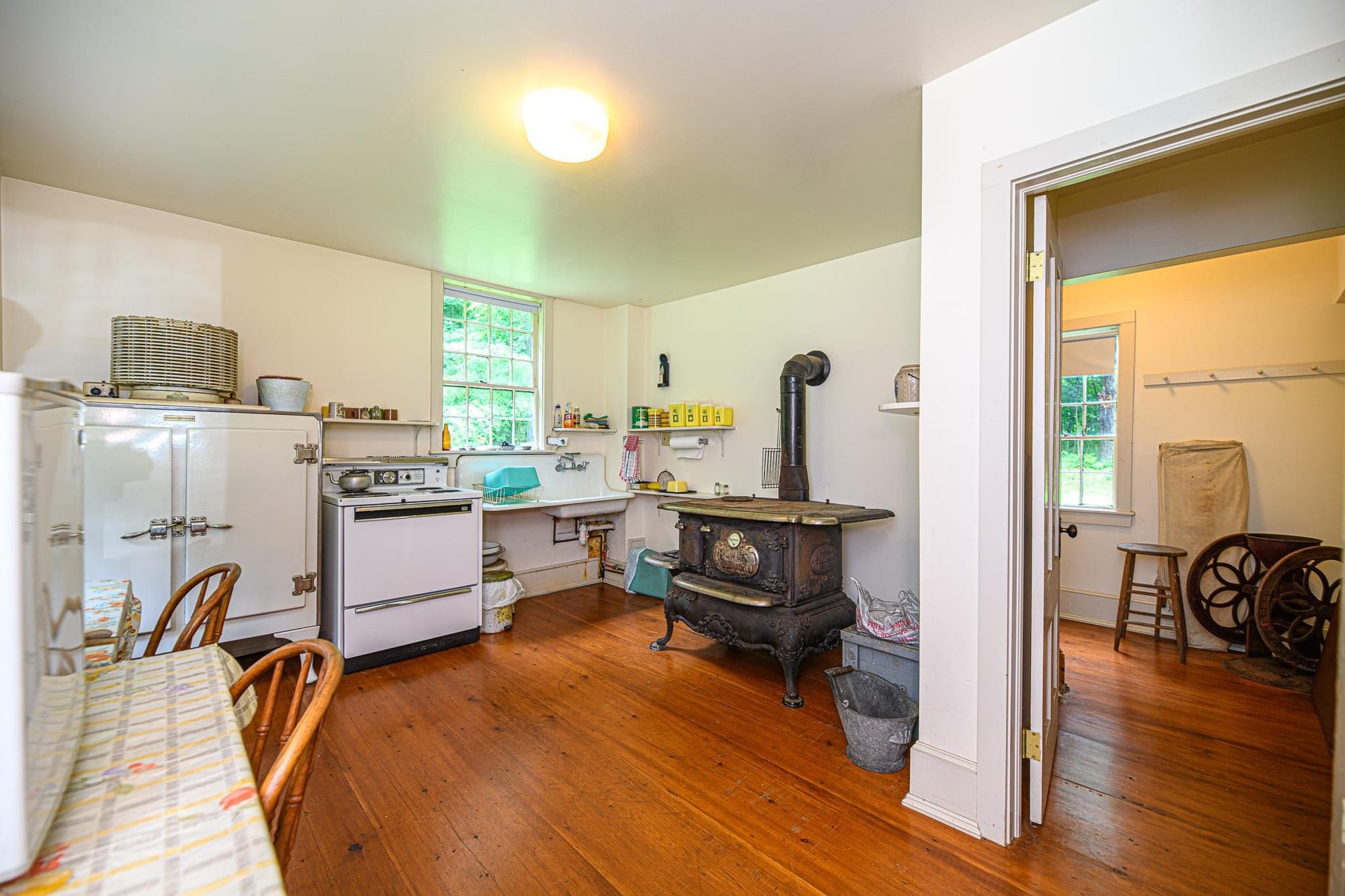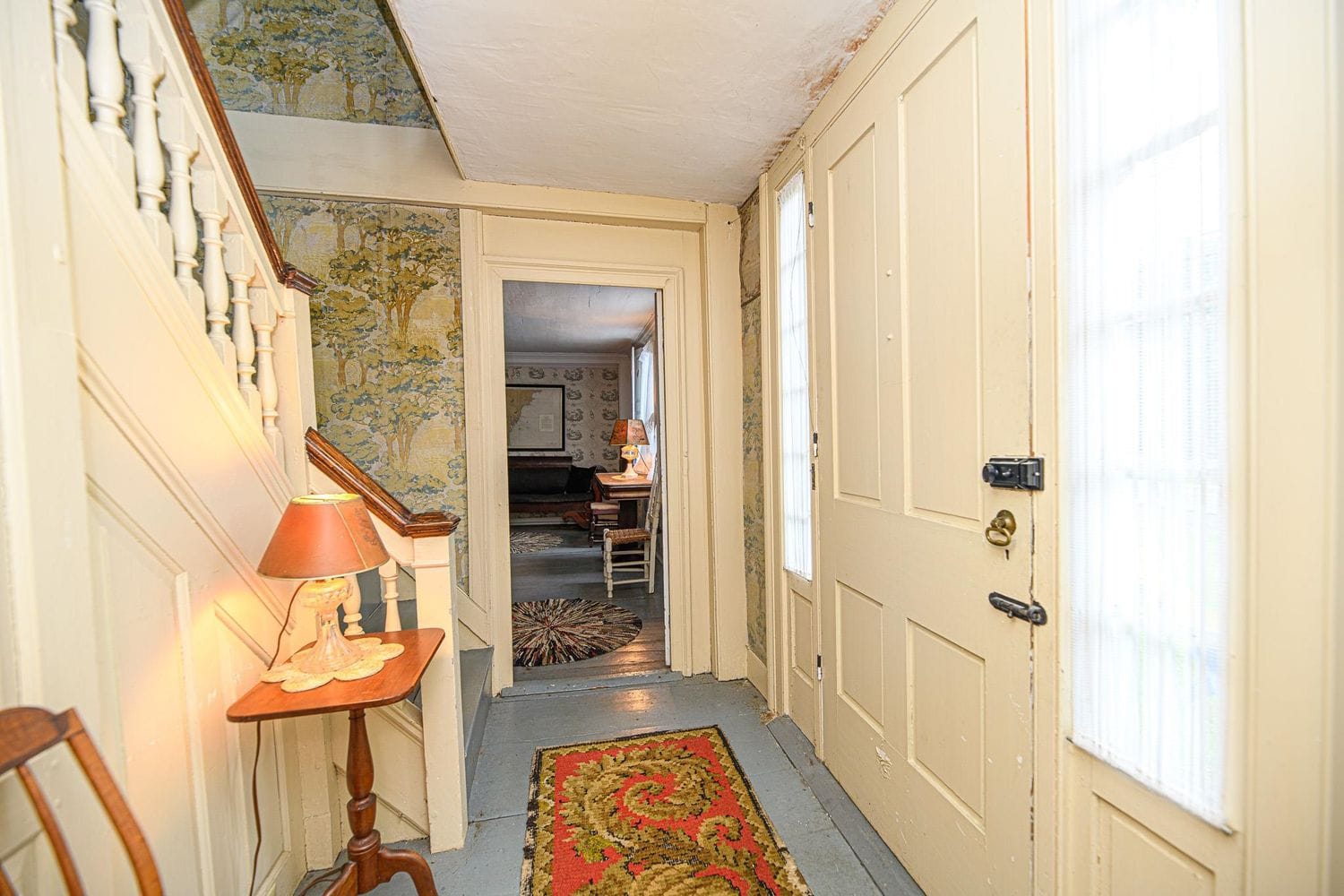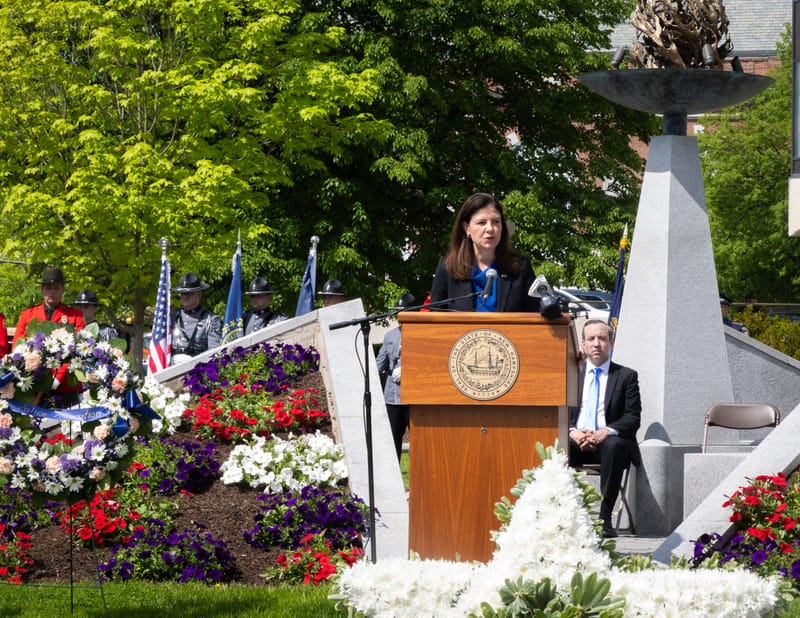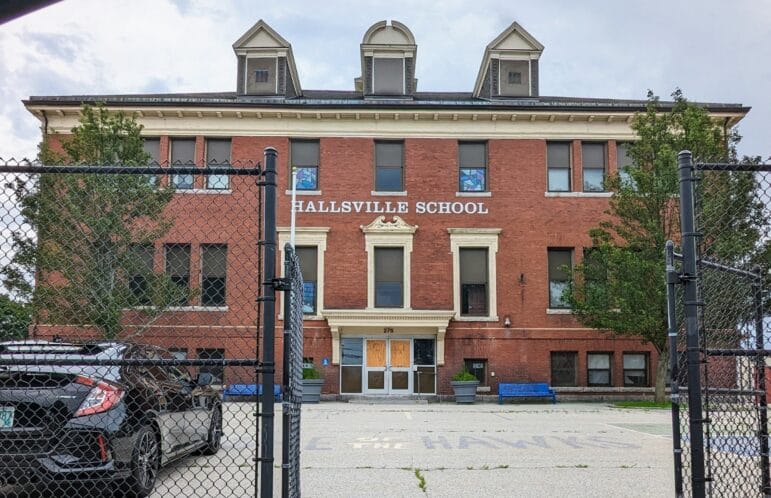Home of one of NH’s first settlers on market for first time in 300 years
The property the house was built on was granted to Edward Hilton in 1631 by King Charles I. Hilton, an Englishman, first settled on what’s now Hilton Point, in nearby Dover, in 1623. The house, built in 1706, and surrounding property on the corner of Exeter Road and Piscassic Road, is still owned by


NEWFIELDS, NH – A historic home that’s belonged to one of the first European families to settle in New Hampshire since it was built in 1706 has been listed for sale, but the buyer must have a passion for historic preservation.
The Hilton Manse is on 3.5 acres at 92 Exeter Road, land that some believe was the state’s first homestead by English settlers. It’s listed for $575,000 by Robert Gilman, of Gilman Real Estate.
New Hampshire Preservation Alliance holds an easement on the 2,756-square-foot, two-story house, and a buyer would have to agree to preserve and maintain the house’s historic features, many of which are original to when it was built more than 300 years ago.
The property the house was built on was granted to Edward Hilton in 1631 by King Charles I. Hilton, an Englishman, first settled on what’s now Hilton Point, in nearby Dover, in 1623. The house, built in 1706, and surrounding property on the corner of Exeter Road and Piscassic Road, is still owned by the Hilton family.

“The 13th generation family of this property’s original owner is looking for a preservation buyer for this well-preserved house and grounds,” NHPA said in its weekly newsletter. “It is significant for its early 18th century construction period and subsequent modifications,” as well as for its association to Hilton, the NHPA said. It is “a gateway structure of Newfield’s village,” part of a district that has been determined eligible for the National Register of Historic Places.

The listing asks that buyers review the easement before booking a private tour of the property.
Preservation easements are a legal agreement between the property and NHPA that allows the organization to protect historic features of the property. The buyer would still own the property and have all the usual rights of a homeowner, but would work with NHPA to maintain the home’s historic character and not have the right to substantially alter it.
Preservation easements have been around since 1955, and there are thousands in place throughout the country, with NHPA holding 13 in the state, according to its website.
“Many potential buyers [of buildings with easements] have already had experiences with these commissions, live in historic districts, have rehabilitated historic buildings or appreciate the history of older buildings,” NHPA says. “To those not experienced or interested in such properties, easements may seem like an unreasonable burden, but to those who appreciate history and have experienced the benefits of preservation regulations, easements are understood and accepted. When the long-term goal is to preserve the property, an easement eliminates only the buyers who do not share this goal.
“Just as land protected by conservation easements still sells, so do buildings protected by historic preservation easements,” NHPA says. “They are most attractive to those individuals who are actively looking for stable historic properties and want to take advantage of a preservation partnership with the easement holder to gain on-going technical help and assistance.”

The two-story white wood frame house has four bedrooms, two bathrooms and a half bath. The first floor is original.
In 1995, all six wood-burning fireplaces, which heat the house, were rebuilt as part of a foundation renovation. The house is serviced by town water and sewer and has an updated electrical system.
The 2022 tax appraisal on the land and house was $400,200, and property taxes in 2022 were $8,388.
Edward Hilton and his brother, William, were sent by Capt. John Mason, founder of Portsmouth, to what’s now New Hampshire to establish a fishing colony.
The land at 92 Exeter Road is said by some, including a 1976 Boston Globe article about the property, to be New Hampshire’s first European-settled farm and homestead.
The house that stands on the property was built by Col. Winthrop Hilton, Edward Hilton’s grandson, in 1706.
Hilton, a mast-maker, only lived in the house a few years. He was killed in a dispute with native Abenaki people in 1710 while he was stripping bark from trees in Epping as part of his mast business, according to a contemporary account, written from the perspective of white colonialists in the Newmarket Advertiser, reprinted on the New Market Historical Society webpage.
The land Charles I granted to Edward Hilton had been part of extensive Abenaki hunting and fishing grounds for the previous 10,000-plus years. The state’s tribes – the Penacook, Winnipesaukee, Pigwacket, Sokoki, Cowasuck, Ossipee, who were known, along with tribes from Maine and eastern Canada as the Abenaki – didn’t own land the way Europeans did, but used it collectively, sharing hunting and fishing on it, depending on the season.
Beginning in 1616, disease brought by Europeans began to decimate native tribes from Maine down through Massachusetts, killing an estimated 50-90% of the Abenaki people by 1630, when the king granted the land in what’s now Newfields to Hilton.





